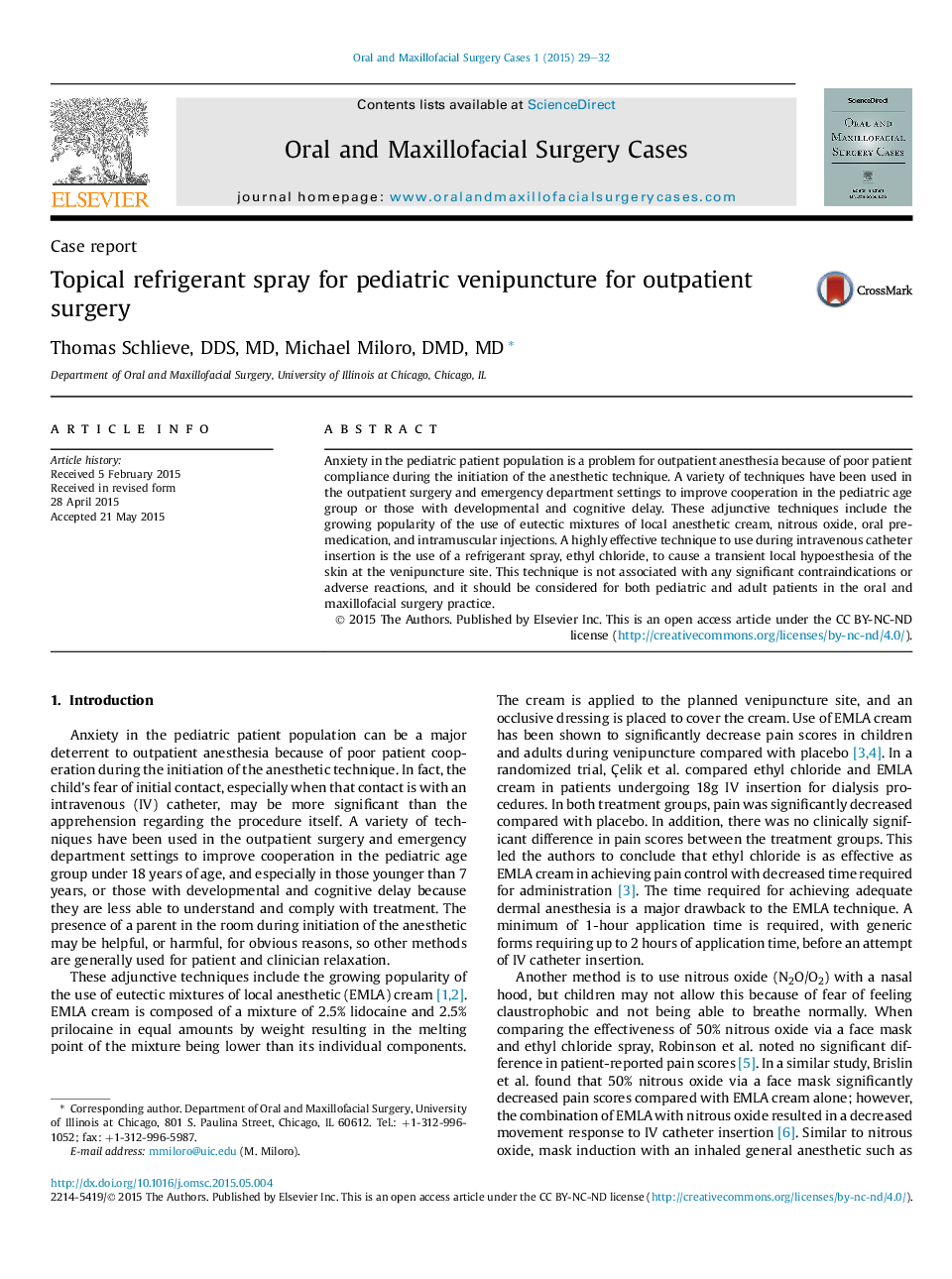| Article ID | Journal | Published Year | Pages | File Type |
|---|---|---|---|---|
| 3162865 | Oral and Maxillofacial Surgery Cases | 2015 | 4 Pages |
•Pediatric anesthesia is a challenge because of poor cooperation from anxious children.•The pain of injections in the child may prevent the ability to obtain intravenous access in the outpatient setting and prevent the ability to perform the planned surgical procedure(s).•A simple technique using topical refrigerant spray can remove the pain associated with obtaining intravenous access.•This simple procedure is well tolerated, and no failures have been observed in the pediatric population undergoing outpatient surgery.•This technique should be used by all oral and maxillofacial surgeons.
Anxiety in the pediatric patient population is a problem for outpatient anesthesia because of poor patient compliance during the initiation of the anesthetic technique. A variety of techniques have been used in the outpatient surgery and emergency department settings to improve cooperation in the pediatric age group or those with developmental and cognitive delay. These adjunctive techniques include the growing popularity of the use of eutectic mixtures of local anesthetic cream, nitrous oxide, oral premedication, and intramuscular injections. A highly effective technique to use during intravenous catheter insertion is the use of a refrigerant spray, ethyl chloride, to cause a transient local hypoesthesia of the skin at the venipuncture site. This technique is not associated with any significant contraindications or adverse reactions, and it should be considered for both pediatric and adult patients in the oral and maxillofacial surgery practice.
